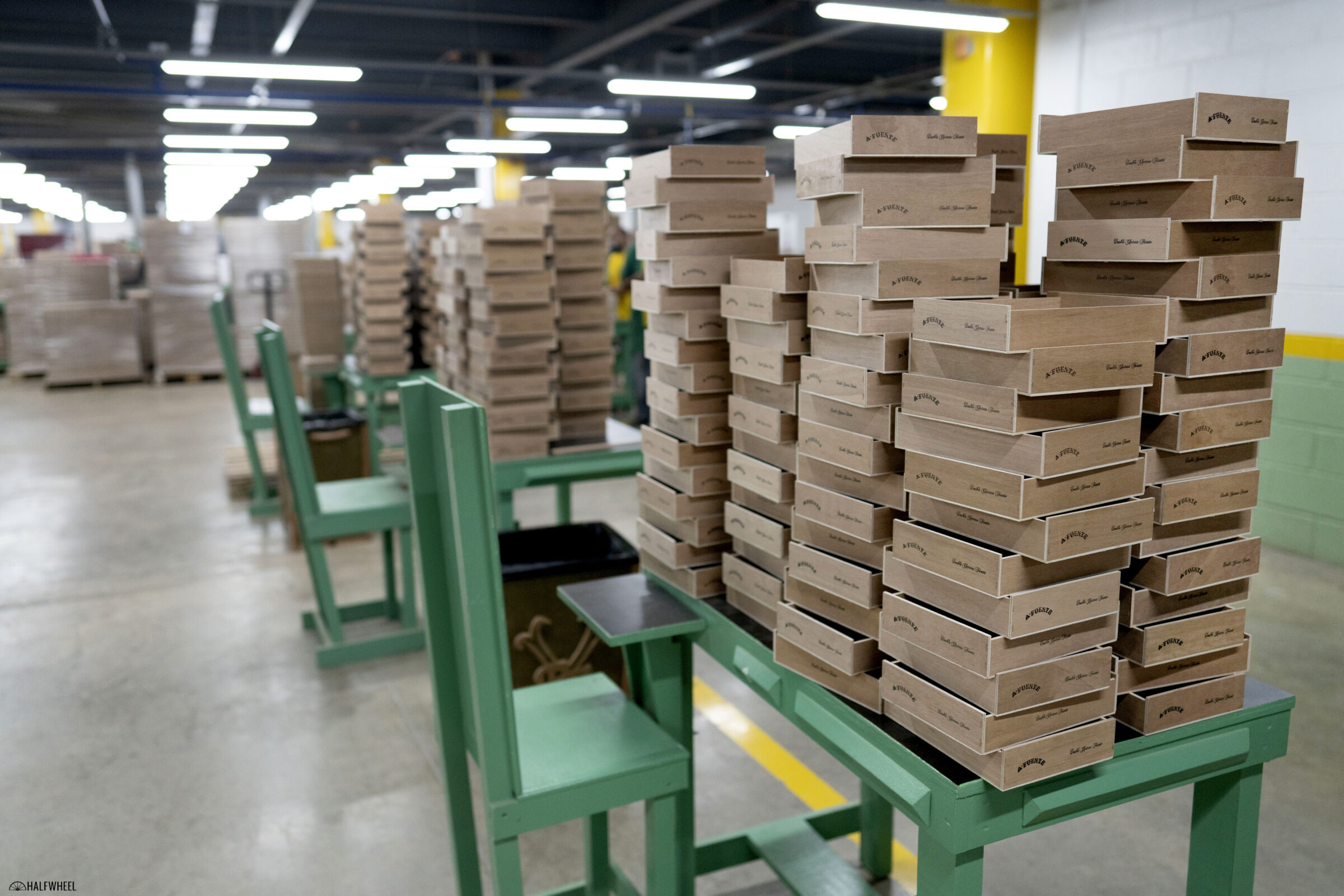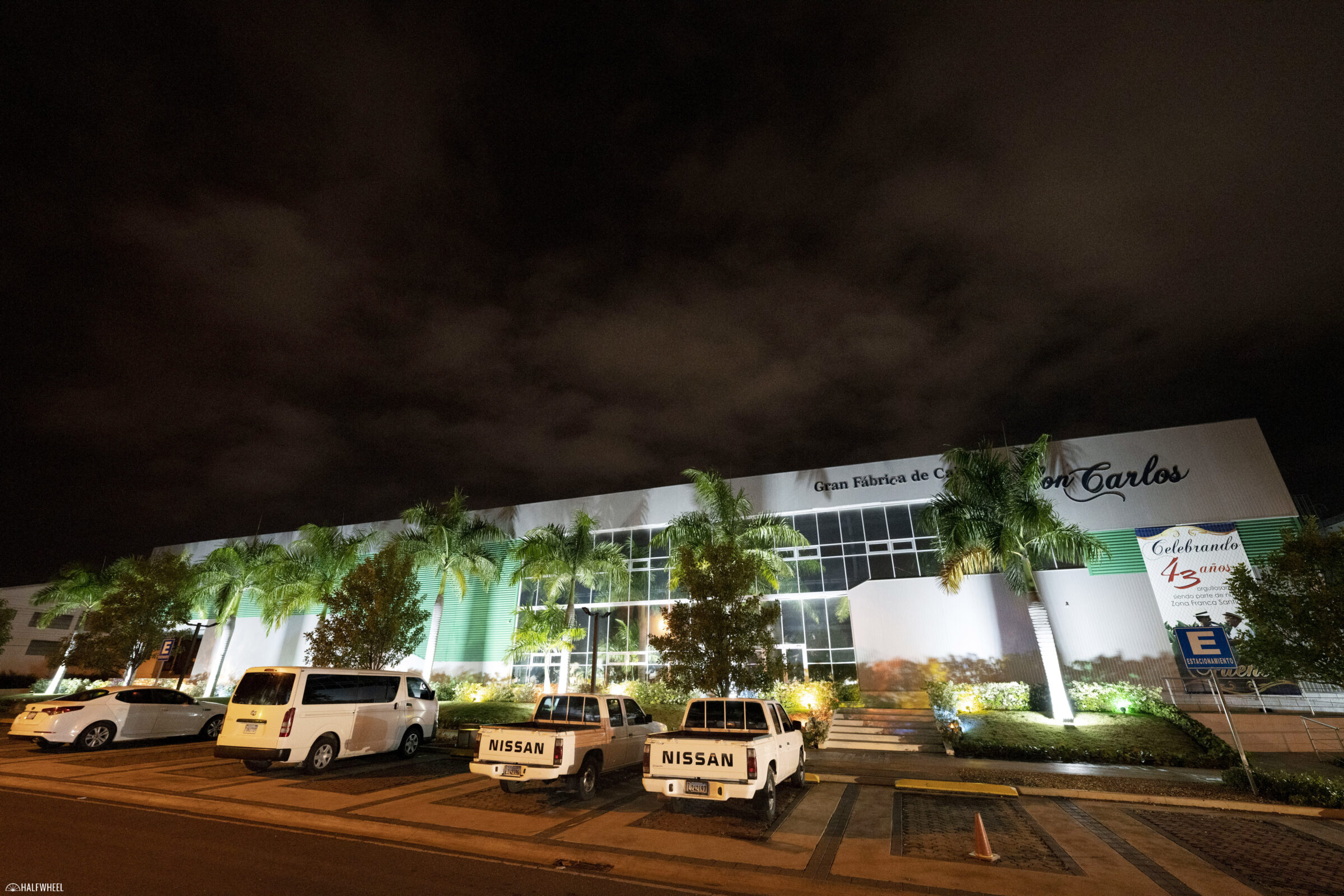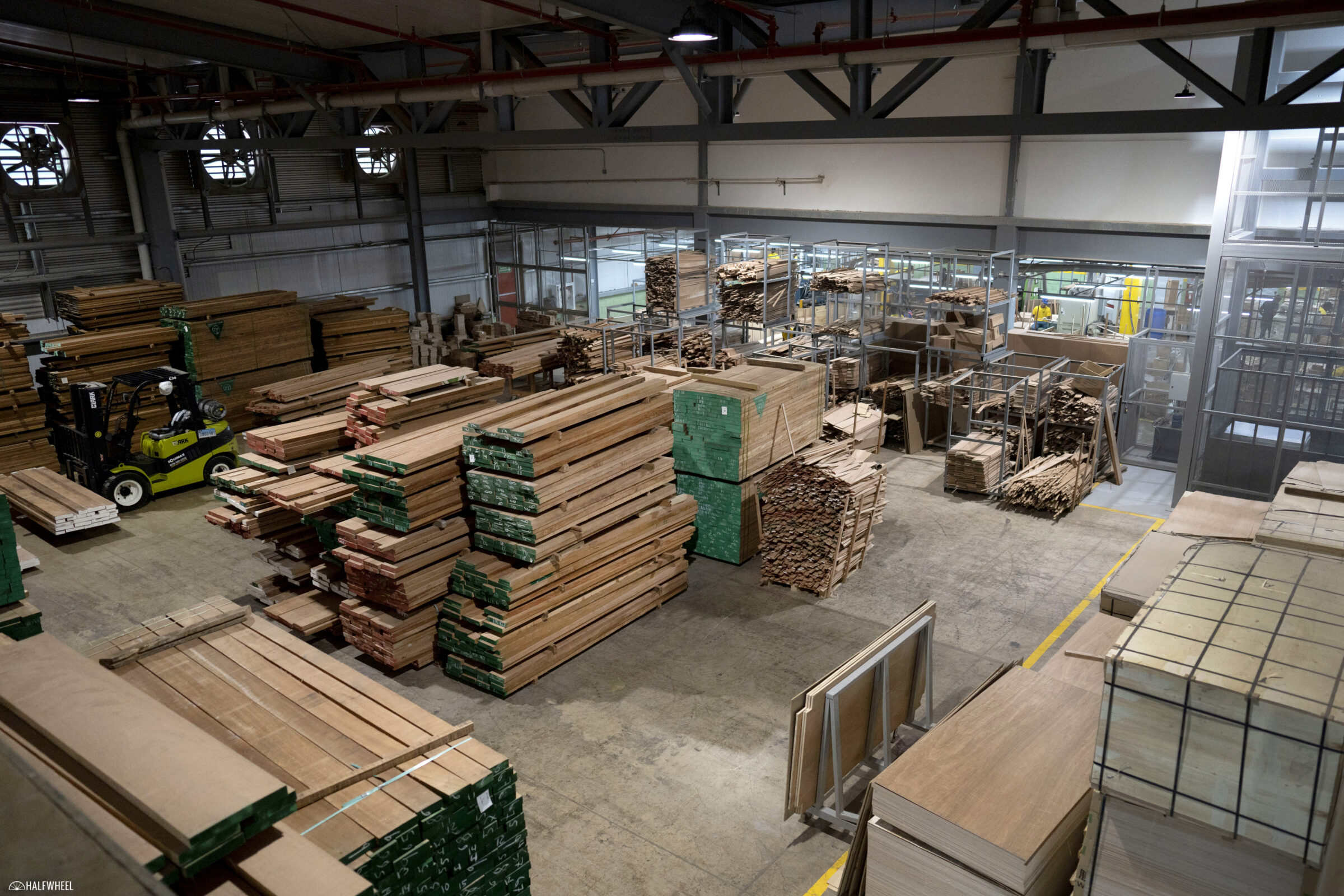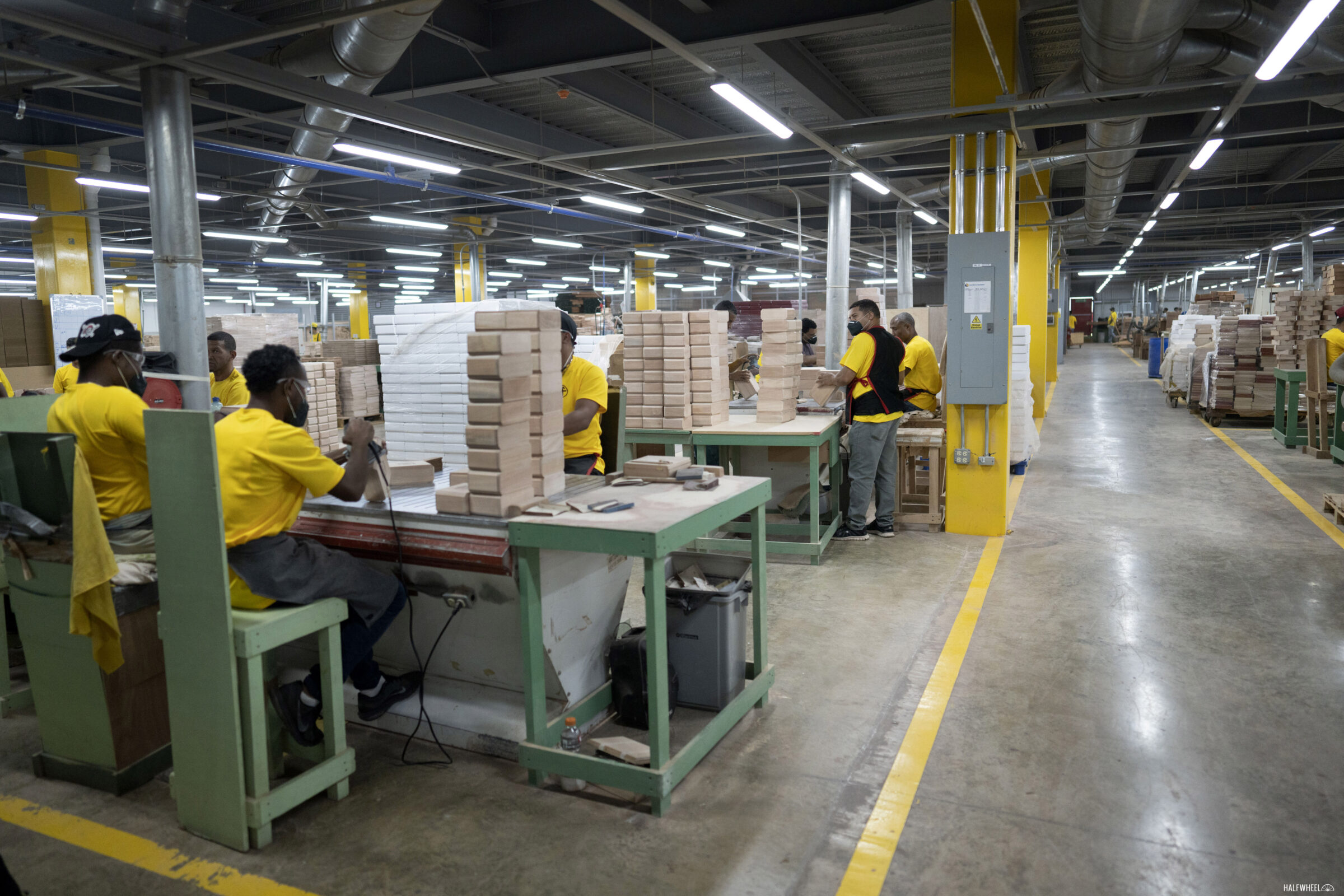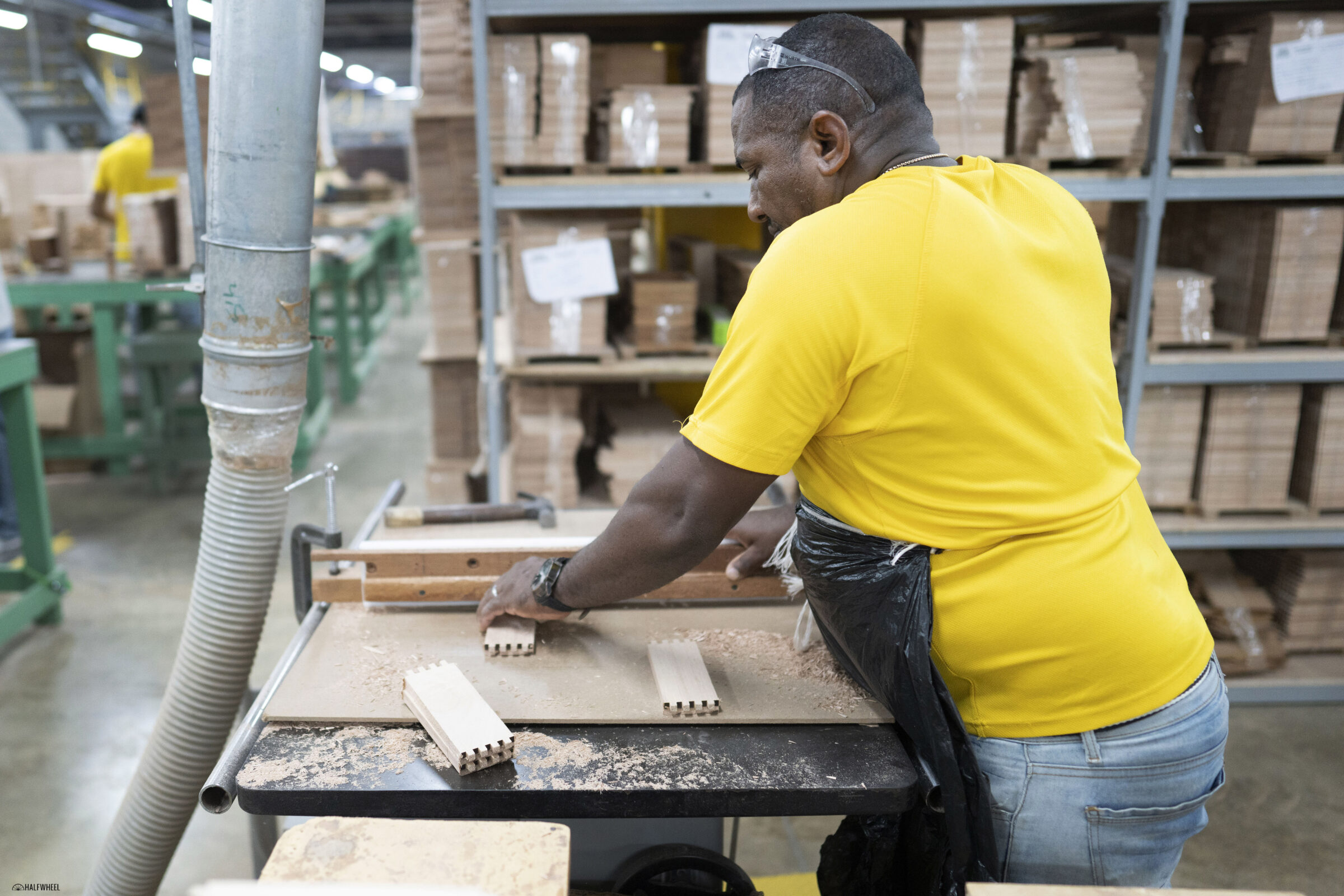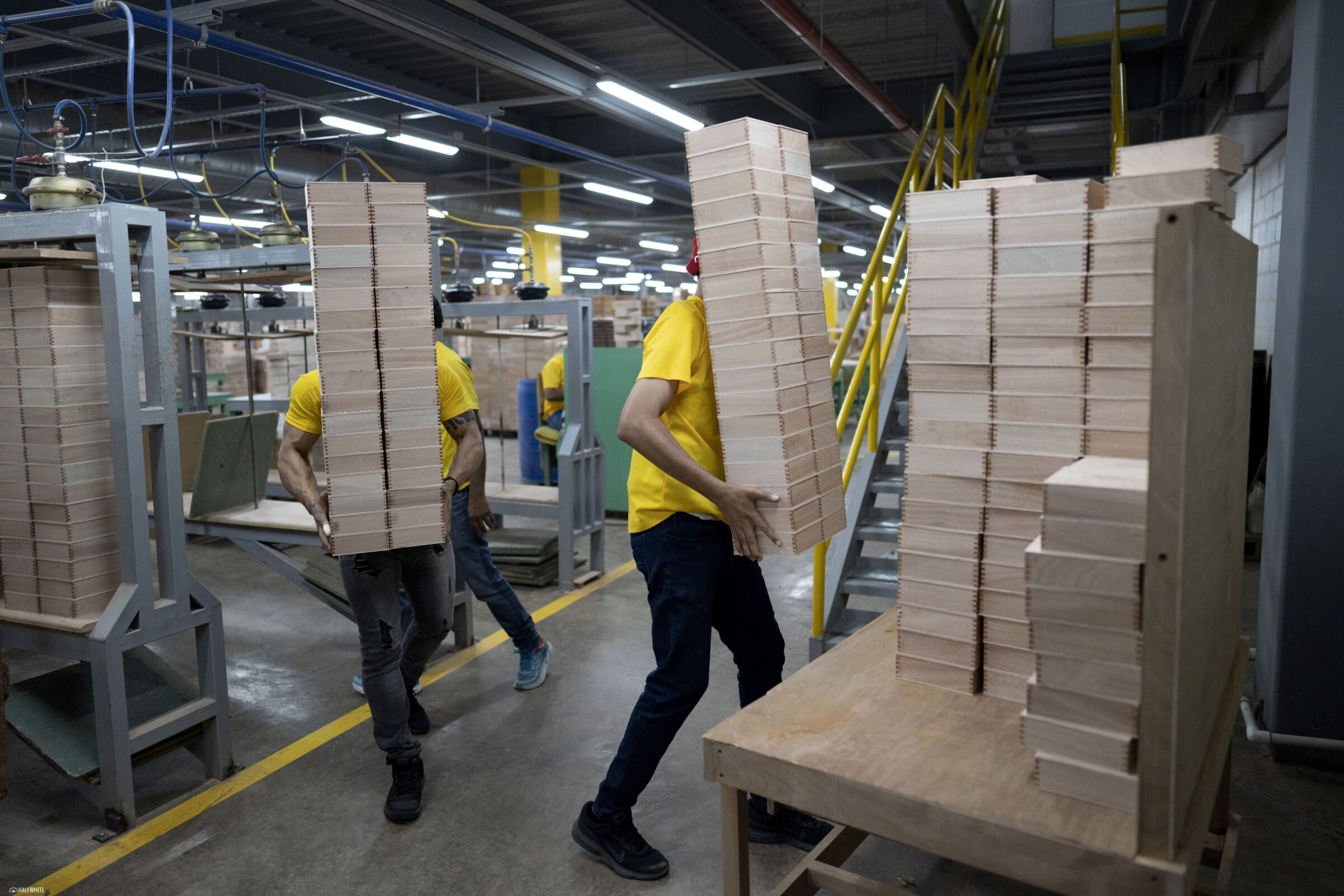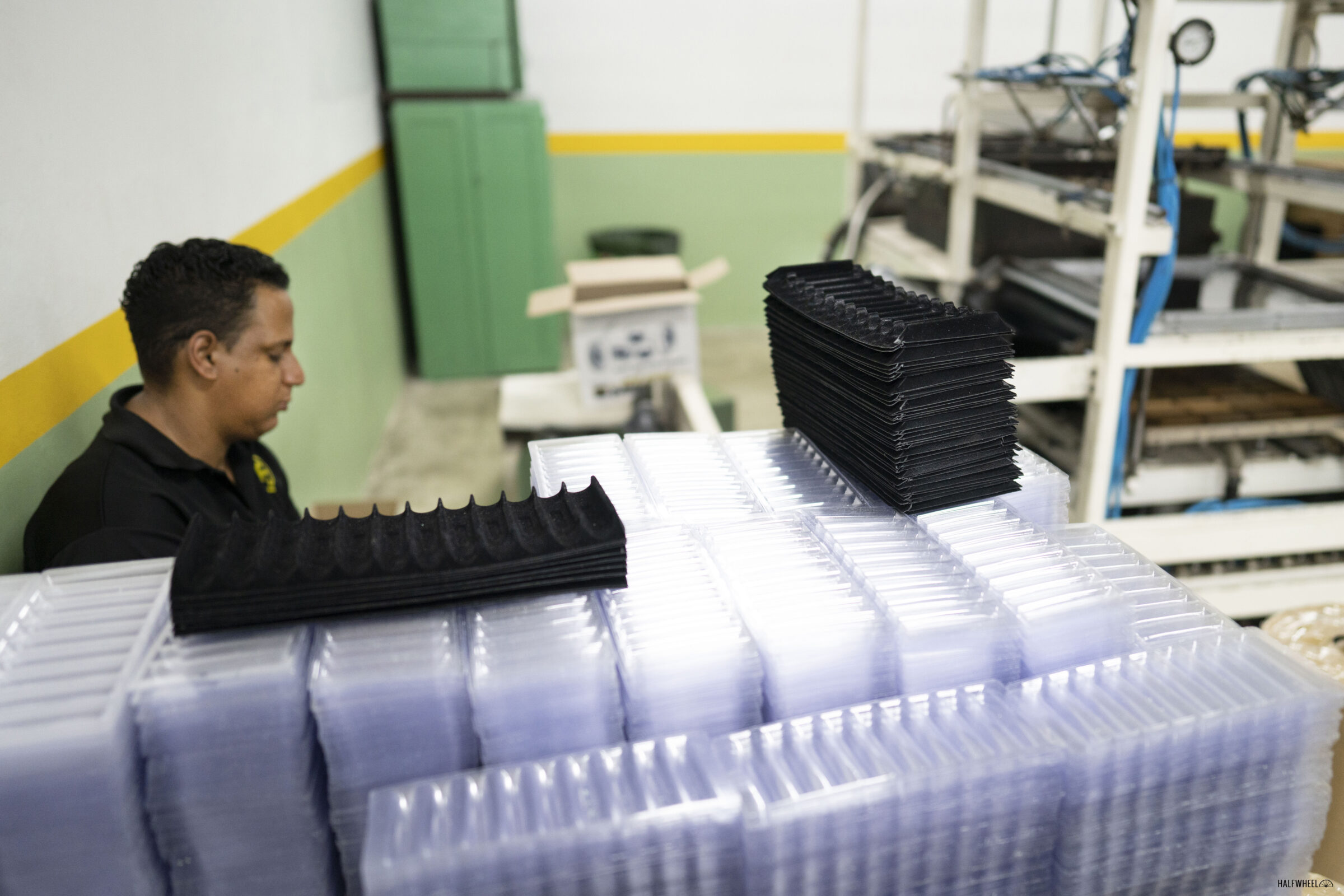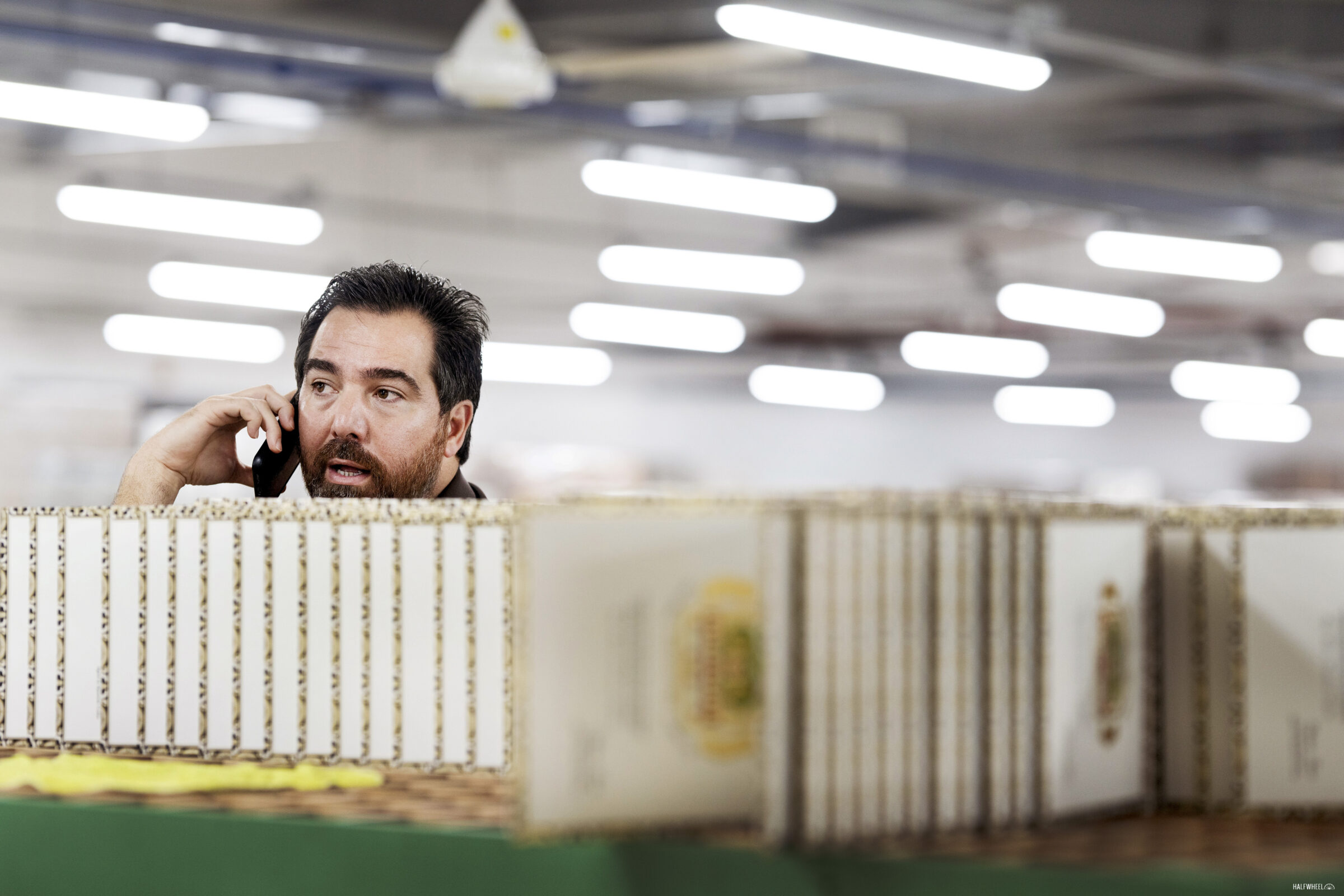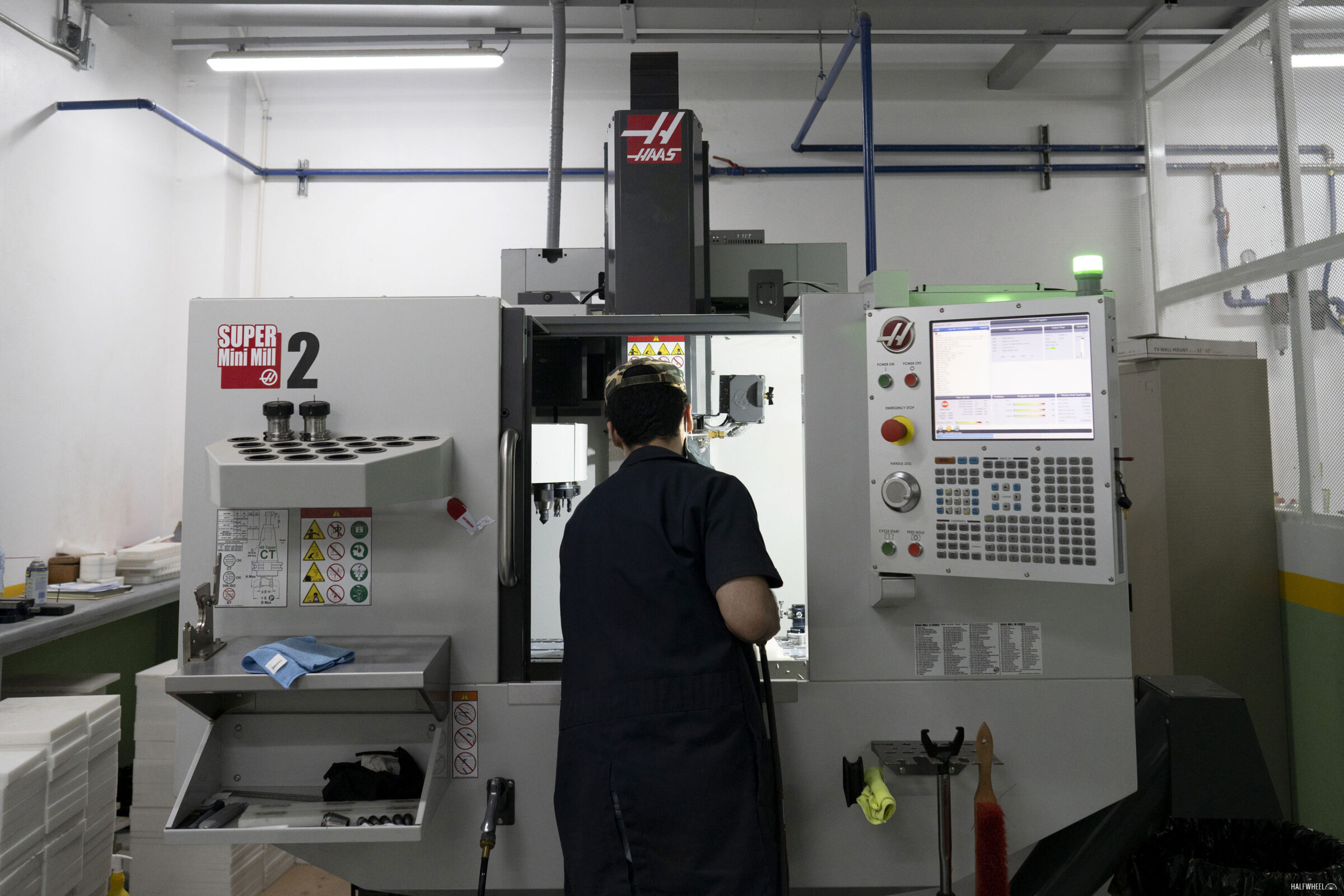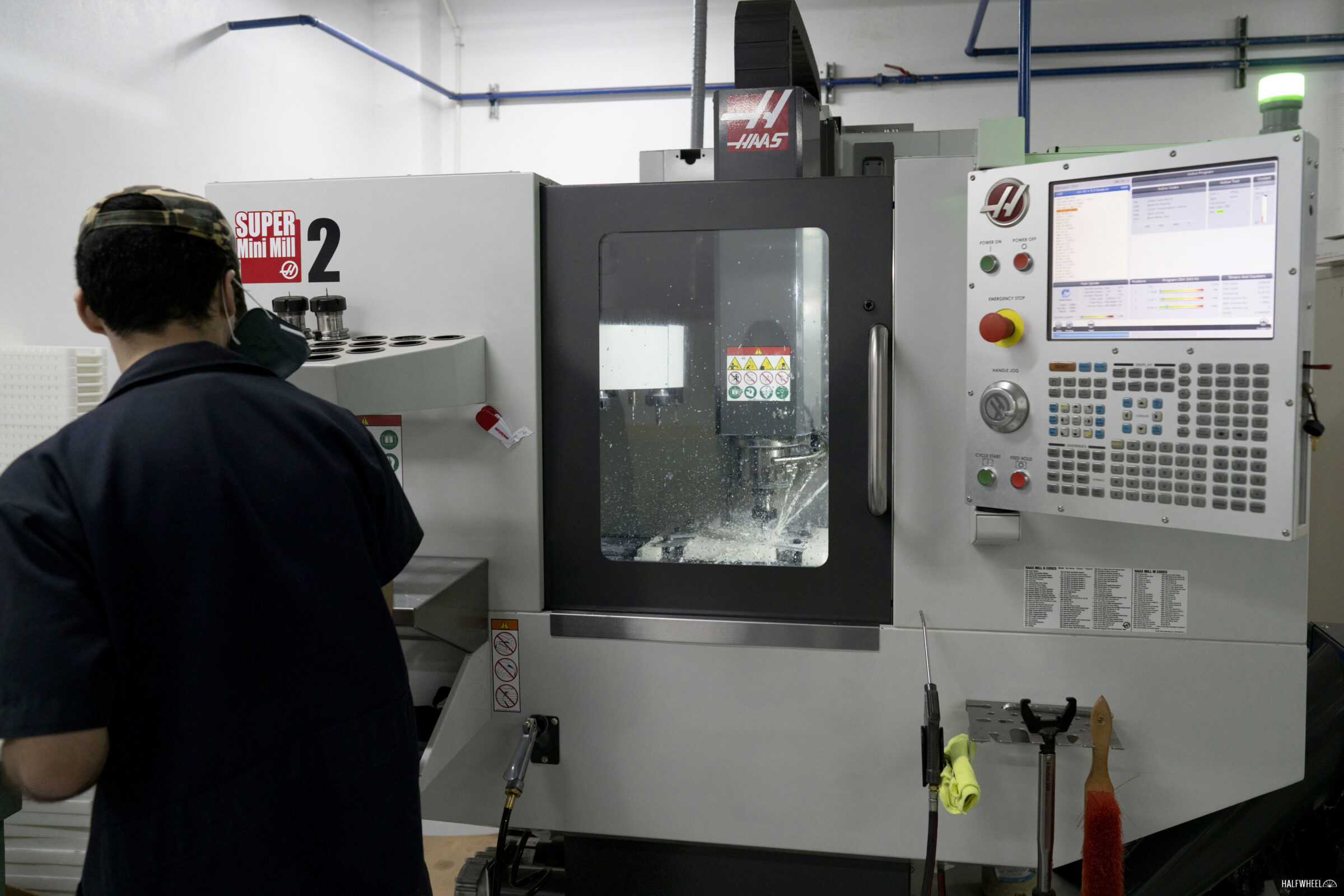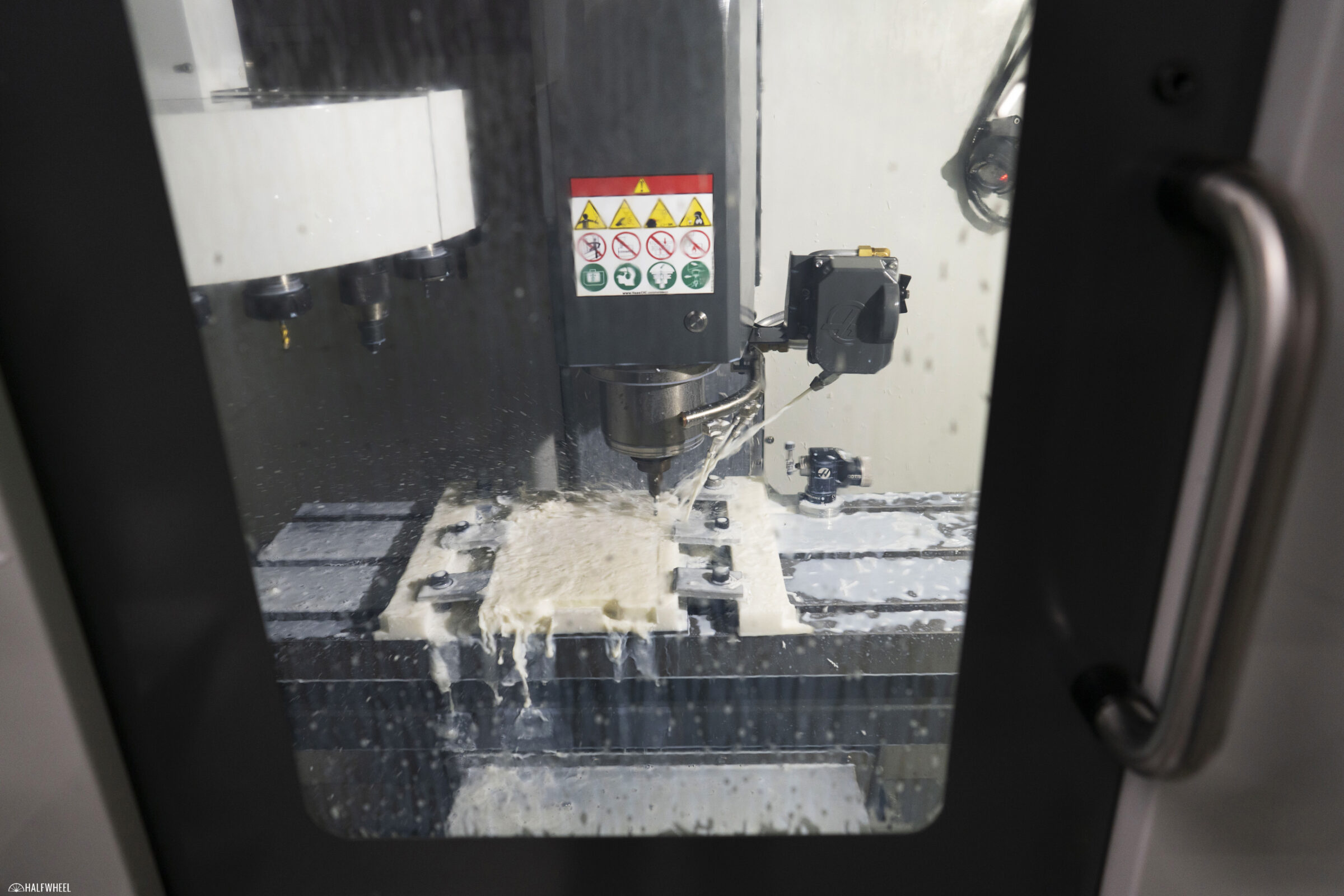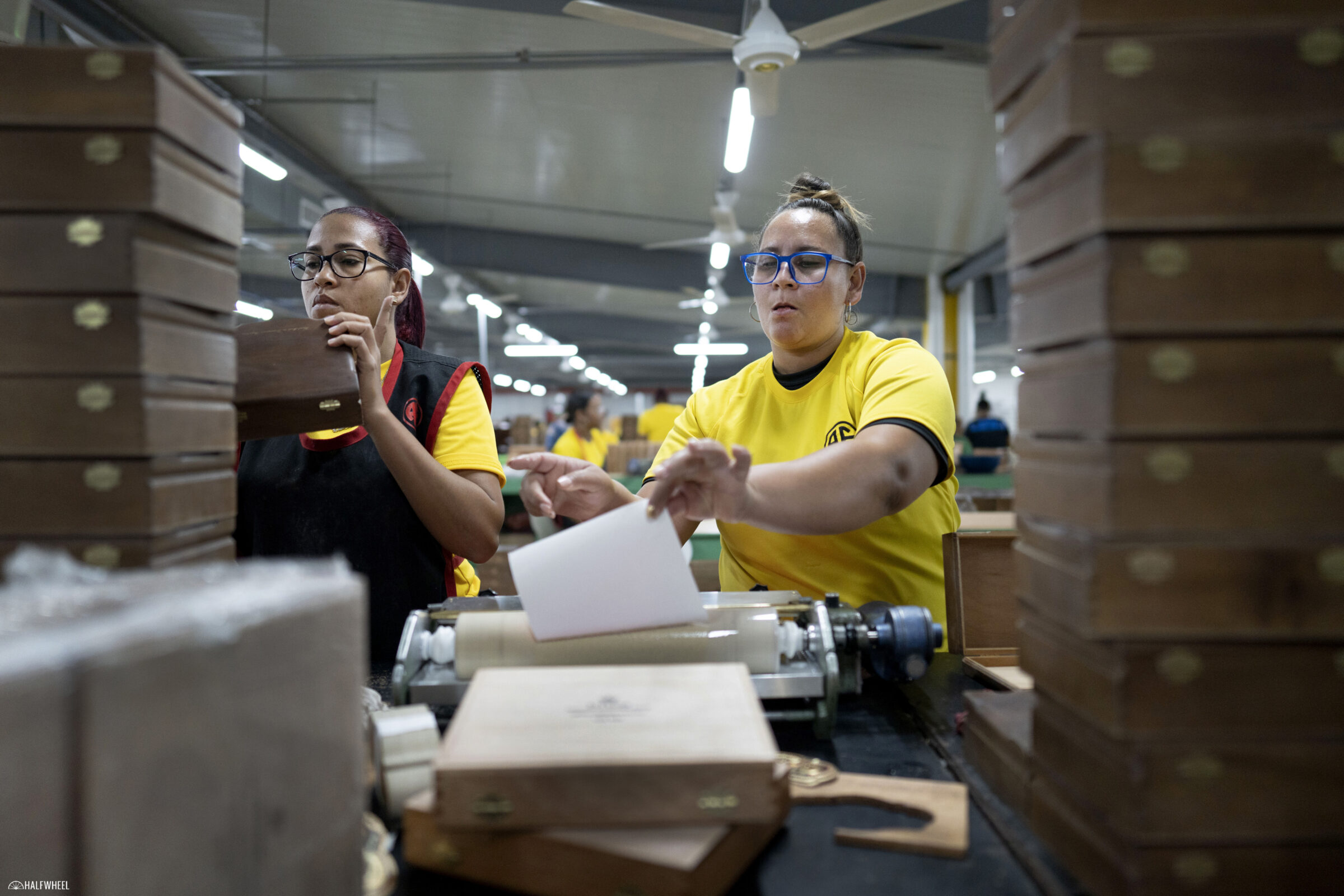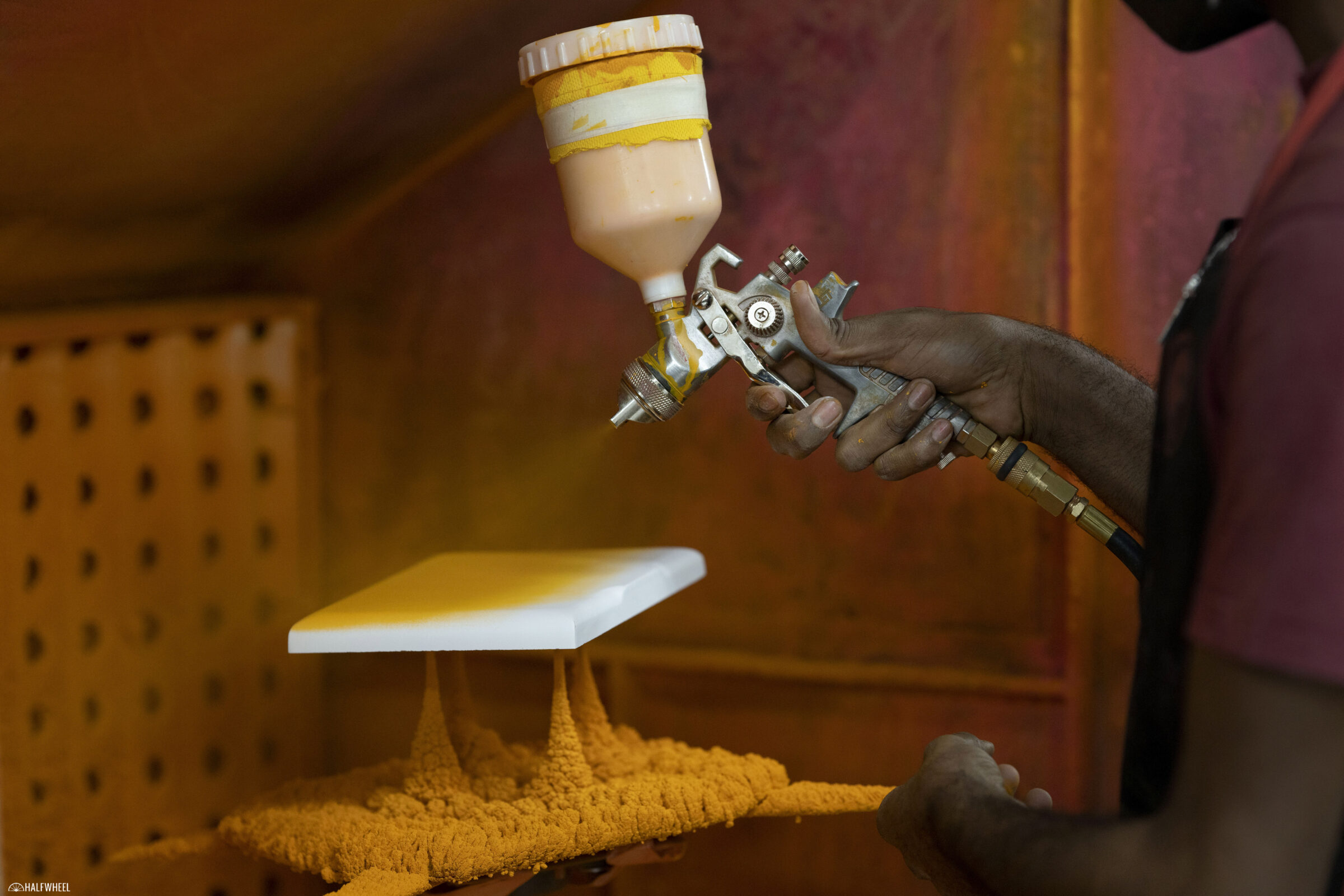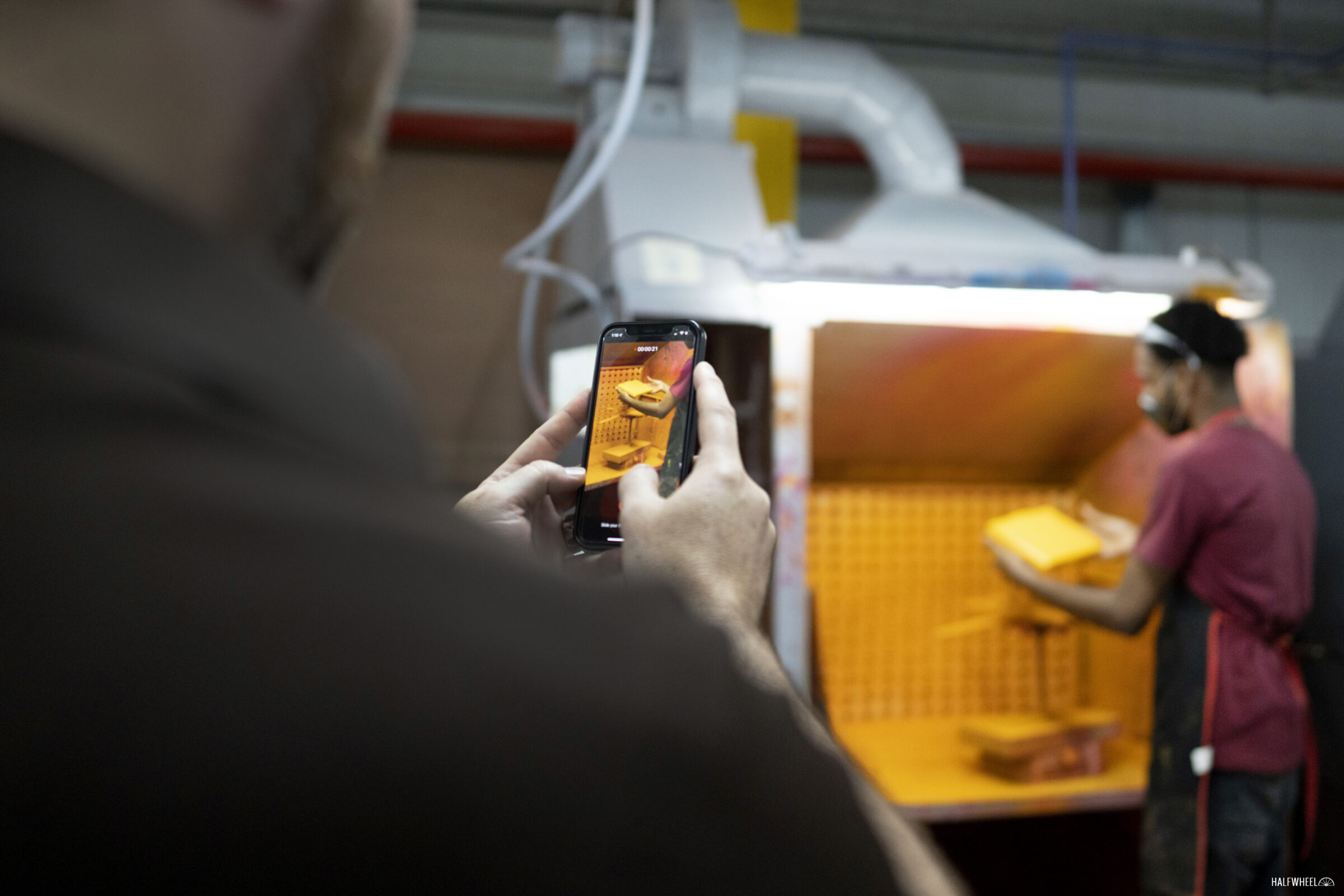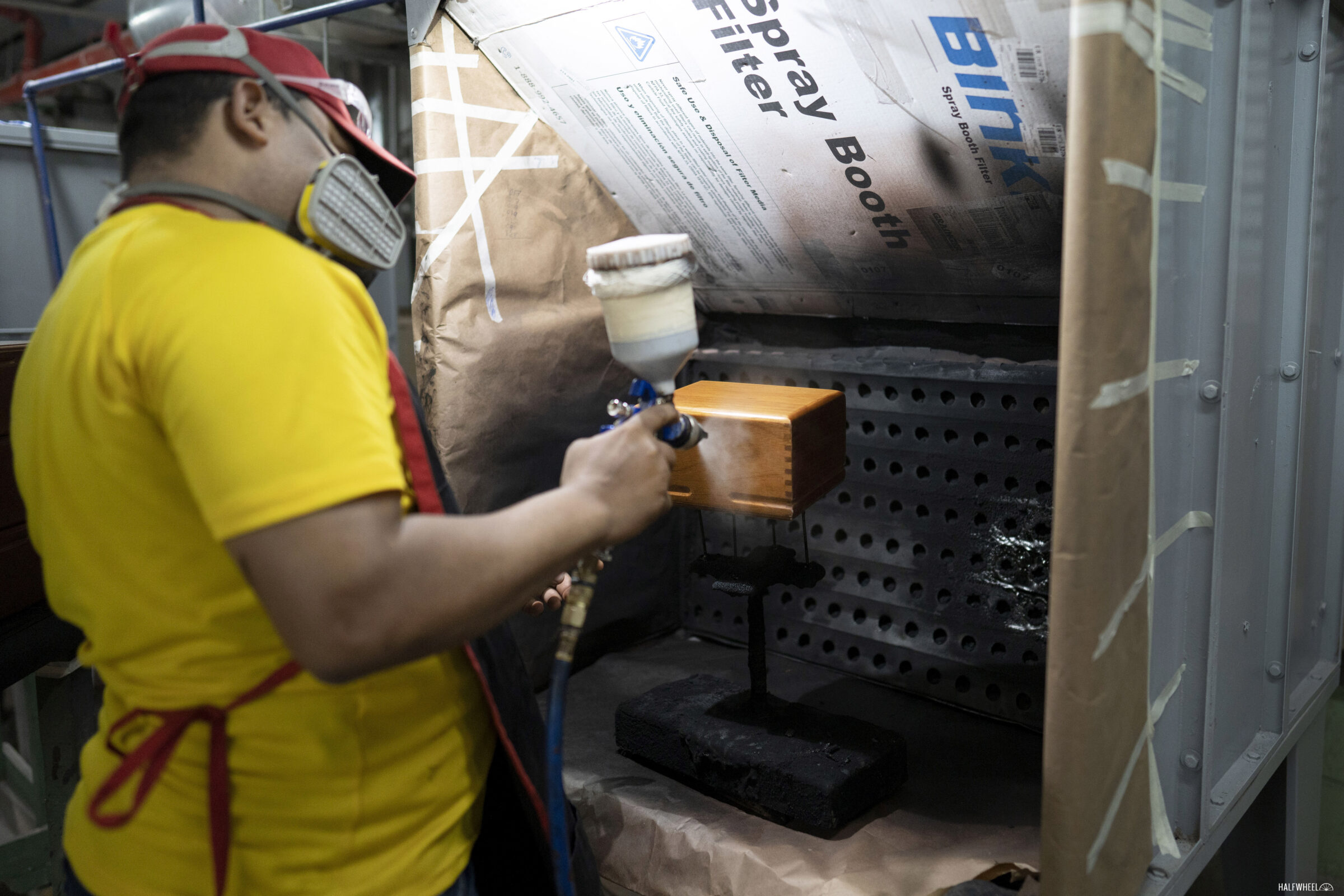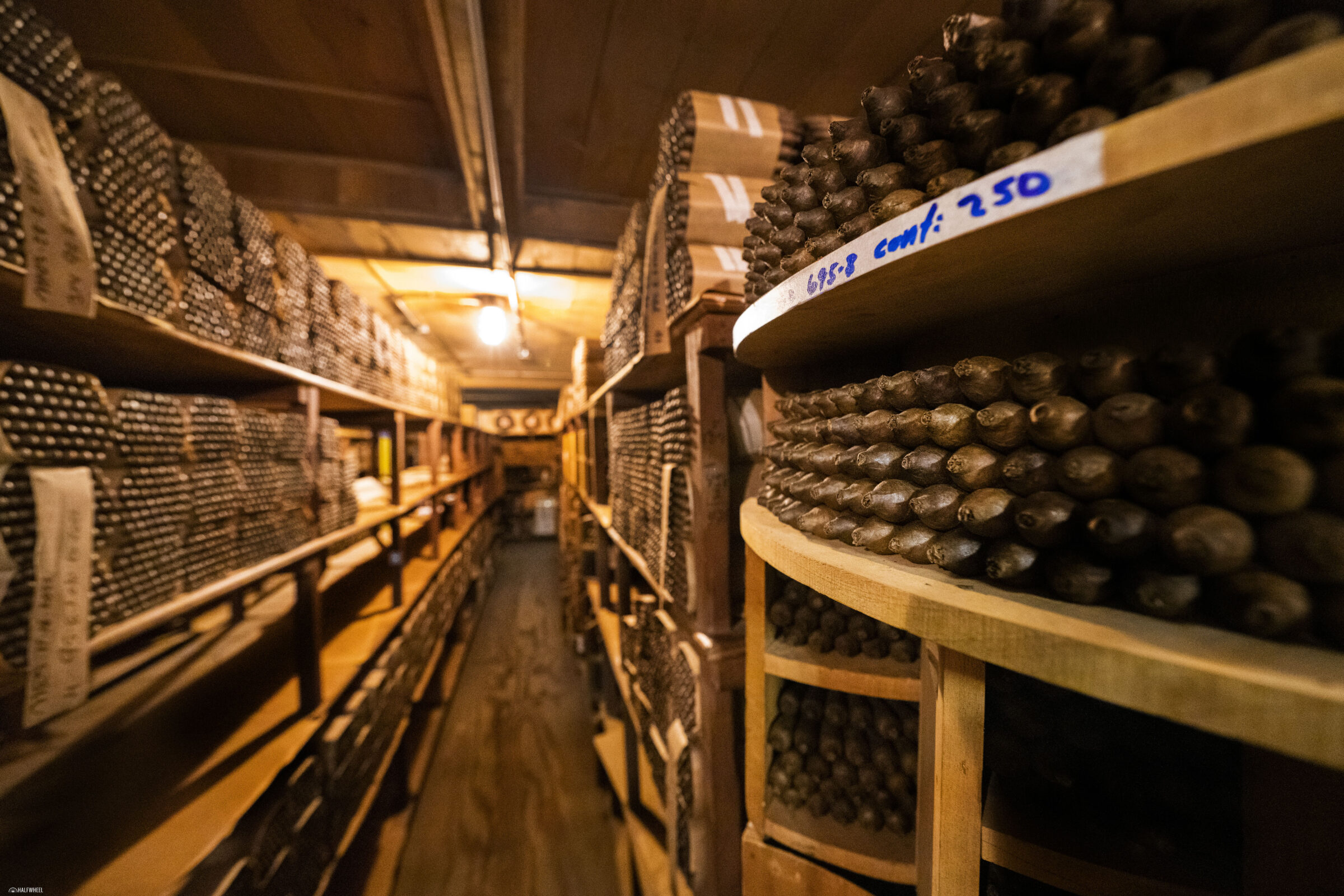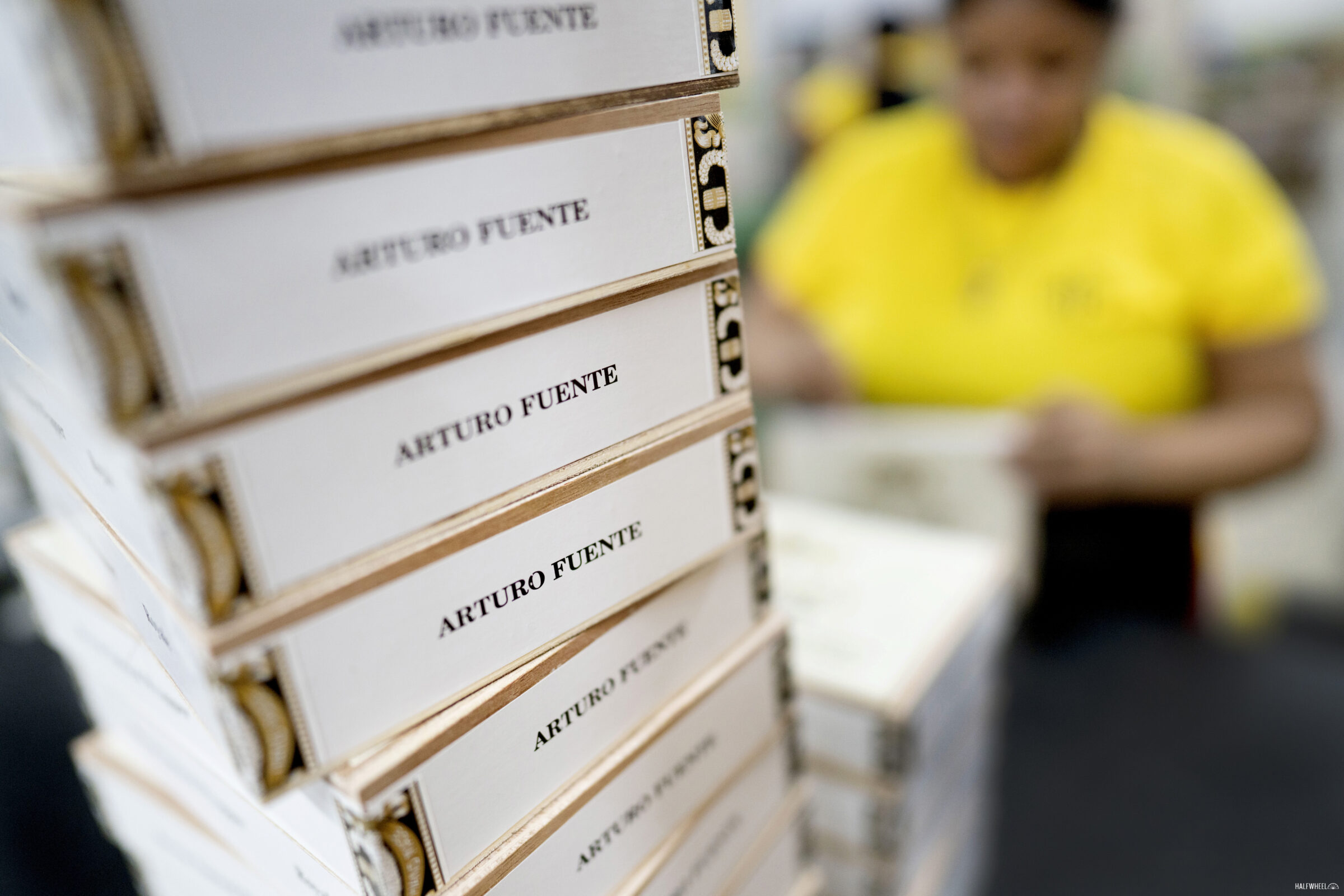Across the street from Tabacalera A. Fuente y Cia Planta No. 1 is a very different-looking building. With “Don Carlos” written on the side of the exterior, there’s no confusion as to whether this is a Fuente building, but it doesn’t look like any of the other Fuente buildings in the Dominican Republic.
Welcome to La Gran Fábrica de Cajas, the big box factory.
In early 2018, the Fuente family broke ground on this 69,000-square-foot facility, located directly across the street from the office entrance of Planta No. 1. Carlos Fuente Sr. never saw this facility; he passed away more than a year before the groundbreaking. Given the personality of Fuente Sr., he may have not been a fan of the grandness. Despite those potential objections, there’s no doubt he’d be proud that the company grew to the size that something like this was needed. Prior to its opening, Fuente had another box factory located in the same complex. It was smaller, slower and certainly less impressive than this massive building.
The box factory is two stories, though the footprint of the box factory operation is much larger than this one building. While some wood is stored in this facility, Fuente has a separate warehouse, located within the same complex as the box factory and Planta No. 1, that is filled to the brim with various wood. Furthermore, not every box of Arturo Fuente—let alone the other brands that Fuente makes—is produced at this facility. Like others companies, some of the boxes come from Asia.
It’s difficult to get a sense of the size of the operation through pictures, but it’s pretty easy to understand what happens: raw wood, paint and other materials come in, and finished cigar boxes go out. Most of the process is still done by humans, though some sort of machine is present at just about every other step.
If your local retailer is waiting on a backordered cigar, the problem is more often than not because of packaging.
While not as important as the cigars themselves, packaging tends to be a near-universal pain point for the cigar industry. Many cigar companies tout being vertically integrated, but that claim falls apart when it comes to packaging. Pretty much every large cigar factory also operates its own box factory, but they aren’t making their own bands, let alone printing the artwork for the vistas inside or the casting metal hardware used for boxes.
Even if a factory is buying tobacco from a grower, almost every factory will acquire the tobacco and do at least some of the pre-industry process themselves. Those steps often require time for the tobacco to finish curing, meaning that the tobacco is on premise—or at least in a different facility—and in the pipeline. For the various packaging elements, there’s no need to have the components in the building until you need them. That is of course, unless something doesn’t go to plan. When things don’t go to plan, retailers and consumers notice. If just one packaging element goes out of stock, the cigars cannot ship to stores. Given the complexity of modern cigar packaging—boxes, multiple bands, cedar sleeves, ribbons, various types of paper, humidification packs, plastic trays, tubos, UPCs—there’s a lot that can go wrong.
Ciro A. Cascella, pictured above, does not believe in that.
Arturo Fuente not only has literal tons of wood, clasps, paper, plastic, etc., but it also has warehouses filled with already completed, empty boxes. Cascella’s philosophy is that the box factory shouldn’t wait for the cigar factory to let it know what it needs. Rather, the box factory should operate at the best pace it can. If the box factory ever has a production issue, the company can dip into its reserves and boxes full of cigars can still leave the Dominican Republic. Compared to the just-in time manufacturing system pioneered by Toyota, this is very expensive.
Fuente has warehouses—which it leases—that serve as storage, just in case something goes wrong. When Fuente stores boxes in reserve, they are empty. This means that the cigars and other elements—boxes, multiple bands, cedar sleeves, ribbons, various types of paper, Boveda packs, plastic trays, tubos—that go inside are stored in their own areas, notably, not inside of the finished boxes. From a space standpoint, it’s incredibly inefficient, though it’s probably cheaper than having to store everything in a climate-controlled room. But there’s always the risk that something happens to the items in storage—damage, theft, fires—or that the box factory simply overproduces extra capacity that the cigar factory never really needs.
Fortunately for Cascella, the bets on the box factory and its ample reserves have come at a time of expansion for Arturo Fuente and the cigar industry as a whole. So far, it’s worked quite well.
Cascella, president of Arturo Fuente, served as a trusted advisor to Fuente Sr. Before his passing in 2016, Fuente Sr. appointed him to a more formal role within the company. Today, he serves as one of three crucial non-Fuente family executives who run the family’s business with Carlos “Carlito” Fuente Jr. While Cascella has his hand in every part of the company, he’s the person responsible for leading the entire Dominican operation, including the long list of construction projects like the box factory.
(For those wondering, Karen Smith and Rich Dolak are the other two persons; neither of whom will be happy to see their names mentioned here.)
Until you buy a box of cigars that won’t open—it happens—you’d be unlikely to think about how important something like this is. As with seemingly every part of the process, it’s easy to take for granted the number of steps and the level of execution that is required.
Unlike Planta No. 1, which has expanded many times over the last few decades, the box factory was built from the ground up. Because of that, Fuente Jr., Cascella and others were able to do more or less whatever they wanted. Given the company’s resources, it’s unlikely anything was off the table. That’s how you end up with a CNC machine in a Dominican box factory.
A CNC machine—short for computer numerical control—is a computer-guided manufacturing system. There are many different types of CNC machines, this particular one—made by Haas, yes the same Haas as the F1 team—is a milling machine that cuts out plastic. A user creates the design in a computer and the machine then uses various bits to cut the plastic down to incredibly precise specifications. All of this is done automatically, with this machine capable of automatically picking between 31 different tips for the spindle, which can spin at up to 8,000 RPM.
This machine is not for making boxes, rather, it’s for making custom cigar molds.
Let’s say Arturo Fuente wanted to test out a new 3 5/8 x 47 torpedo vitola, a size that has probably never been made. It could choose to roll the cigars and place them inside tightly wrapped newspaper, an old method of pressing the cigars. That would get the cigars produced, but it wouldn’t be a great test of the cigars as that’s not how Fuente would make them as a production item. There are two other options: most factories would ask a mold manufacturer to make a sample of a test mold—a process that oftentimes takes a couple of months—or a factory could make the model themselves, hand carving it out of wood.
The CNC machine is a much better option. In about six hours, with little human labor involved, the machine will produce the mold to incredibly exact specifications. If Fuente decides it wants to test this vitola in five different dimensions, the CNC machine can have those test molds ready to go in less than two days. Furthermore, the machine is designed to operate with little human intervention, meaning it can work through the night.
Another obvious benefit to this machine is replacing broken molds. Cigar molds are two pieces—a top and bottom—and you need both. If the top piece is broken, the bottom piece cannot be used. Rather than waiting weeks for a supplier to send a replacement, Fuente could just make it across the street and walk it over to Planta No. 1, all in the same day.
I’ve visited close to 100 different cigar factories all around the world, I’ve yet to see another with a CNC machine.
Unlike the cigar factory, where workers tend to be close together and oftentimes work together, employees in the box factory tend to work individually. Each one has a specific task or set of tasks, which isn’t much different than the cigarmaking process. Rather, the difference seems to be that so many of these processes require the boxes to rest in between steps—so glue or paint can dry—which also means workers are more spaced out so that there are areas to store the boxes while they are in production.
Tucked inside the various buildings are workshops, complete with a supply area of a small hardware store. Whether for repairing a light fixture or the antique machines like the ones that make the company’s cellophane, the operation is large and complex enough that this is a necessity more than a luxury.
It’s not just the CNC machine and welding, Fuente also has its own fleet of trucks that operate exclusively within the free zone, transporting things from one building to another all day long.
As with many other recently built cigar box factories, health and safety for the workers are big talking points. The reality is that no matter how many times employees are told to wear personal protective equipment, some are unwilling. At La Gran Fábrica de Cajas, one way to combat this is by making the individualized paint booths as safe as possible.
Beyond simply expanding the number of boxes that the company can produce in a day, another goal of La Gran Fábrica de Cajas was to introduce more modern practices that help to improve the efficiency of material use, including things like paint and sealant.
That said, a lot of the processes are done via pretty old-school methods. Each color of paint on the top of a relatively simple box like Hemingway is applied via a screen-printing method. Many steps to produce one logo on a box that is widely seen but rarely remembered.
Words by Charlie Minato. Photographs by Brooks Whittington.

